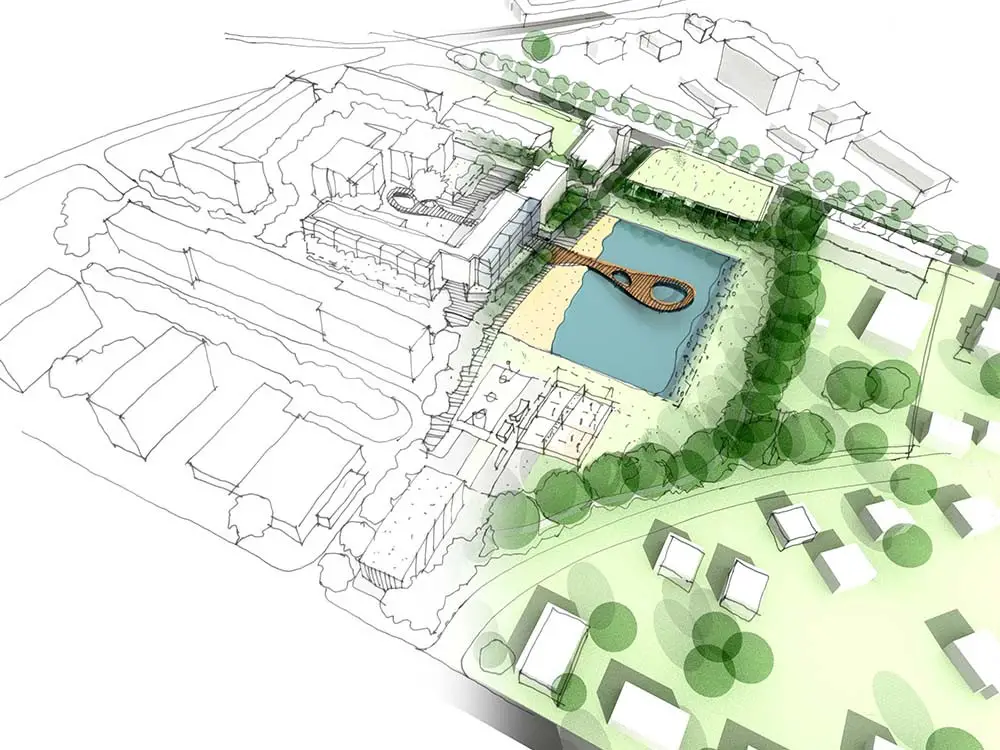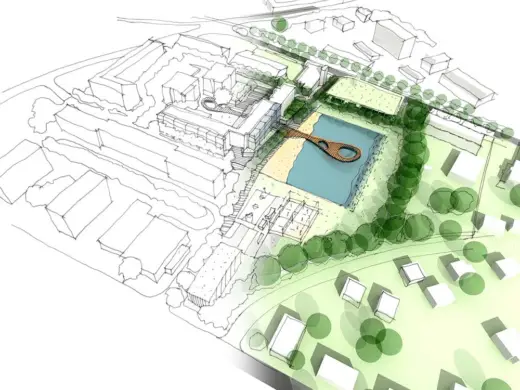Unprecedented demand for development land in UK advice, Property building programme guide
Unprecedented demand for development land in the UK
27 June 2022
Unprecedented demand for development land across the UK in 2022 – here’s how to secure your purchase before someone else does!
Land deals are getting harder to find
and when you do spot an opportunity, there are many others who also want it. If you don’t have the cash to purchase it and get the deal done quickly, another developer will. With the average UK land purchase price in 2021 being £379,000 (ONS), and the highest being £932,540,400, the cost of land is increasing at a rapid pace.
It’s not all bad news for developers though – the average Gross Development Value in the UK has also hit an all-time high – so whilst the costs are higher, so is the profit.
The challenge is how do developers finance this high land cost? The answer – a simple financial product called land bridging finance.
What is land bridging finance?
Land bridging finance is a short-term loan secured against a plot of land that does not have any buildings or structures on it. It’s possible that the area was previously used for petrol stations, forecourts, agricultural, storage, garages, equestrian use, or “scrub” land with development potential. Everything – even brownfield sites, has value, regardless of its previous or current usage.
Typically, such finance facilities are used by property investors, speculators, and developers to purchase land and either apply for a change of use or revise current plans to improve or make it more profitable before selling or developing it.
Developers frequently use bridging finance to buy a block of land and then obtain planning permission to create a housing development or even commercial units. Such acquisitions often need to be completed rapidly and it’s this combination of high value and urgency that makes them ideal candidates for alternative financing such as bridging.
How does land bridging finance work?
Typically would-be borrowers have two routes to access land bridging finance. They either go directly to a lender, or via a broker. There are pros and cons to both which we’ll summarise:
Obtaining land bridging finance through a broker
Obtaining land bridging finance via a broker Pros:
Going via a broker has one main advantage – they will be best placed to source the right lender for your deal. The broker’s goal is to obtain the best deal possible from the whole of the market. There are many lenders out there in the UK who will be able to fund land purchases, but finding the right one for your specific deal takes experience and time.
Whilst you could attempt to approach every lender the reality is that it’s just not possible. The reason for this is that not every lender is directly accessible to borrowers but instead rely on their network of brokers and intermediaries to supply them deal opportunities. Lenders such as private investors or family offices are typically out of reach for borrowers attempting to go direct.
Brokers also take the time to understand your individual circumstances and with their awareness of which lender is taking which types of land deals, they only enquire with the ones who are interested in your specific deal. The real advantage is that they will package up your deal in such a compelling way that meets the criteria of the lender, and in doing so create a competitive market for you. By seeking out several lenders who want your deal this drives down interest rates and generates better terms.
As Stephen Clark from Finbri, a land bridging finance broker explains, “As a broker, it’s our job to know the most relevant lenders for each deal. We package the borrower’s application in such a way that the value of the deal is clear to our lending panel. We supply all the information in the format that the lender needs, making it incredibly easy for them to understand and ultimately underwrite the deal. Lenders genuinely value brokers.”
Cons:
Cost. Brokers charge a fee for their service which is usually paid as commission on the gross loan deal. For it to be worthwhile, it’s important that this cost is offset by the lower interest rate or better terms achieved.
Obtaining land bridging finance directly from a lender
Obtaining land bridging finance directly via a lender Pros:
No broker fees. The real advantage here is that you won’t be paying broker fees at all. If you have had previous experience with a lender, are happy with their terms and fees and do not feel the need to drive down the interest rate then going direct can save you approximately 1% of the fees you’d otherwise be paying to a broker.
Cons:
It’s the opposite of utilising a broker, so the main disadvantage is that you may not find the most appropriate lender for your deal. This may give you a skewed view on whether your deal is even doable. Whilst you could shop around for a lender who is willing to take on your deal, the likelihood is this will cost you time, and time may not be something you have on your side as land opportunities appear quickly and disappear even faster.
How much can I borrow?
As a general rule of thumb, most lenders are willing to offer up to 50% of the land value for land without planning. For land with planning this increases to 70%. Depending on your aspirations for the land, some lenders may even offer up to 100% finance over the longer term if you’re including development, but that won’t be available from the outset when you initially purchase the land.
How long will I be able to borrow money?
Land financing is typically available for as little as one month or as long as 36 months, although most lenders usually look for between 3 to 24 months and this is determined on a case-by-case basis.
I’m interested in developing the land – what are my options for finance?
The short answer is that there are a lot of options available when it comes to developing land, but all options come under the umbrella of ‘Development Finance’. Development finance can be typically made up of debt based finance, equity based finance or a mixture of both.
The options for development finance can be taken out on their own as an individual financial product or combined to create a unique mix of products that would be tailored to the borrower’s specific needs and circumstances.
Most property developers take out loans to fund their projects, and these loans typically include a lump sum for the purchase of the land or property via bridging finance, as well as a specific amount to cover the “Costs to Complete” the project, which includes the construction costs as well as any associated professional fees and other costs. The facility for the construction element of the loan is always offered in tranches. As a result, the developer doesn’t have the burden of being charged interest on the whole amount from the outset.
So what are the types of development finance called and what are they?
Debt based development finance:
Debt based finance is finance that is secured against the property or group of assets. In the event of the debt not being serviced (repaid) in line with the terms of the borrowing (which is known as a default) the asset will then be repossessed and sold to repay the lenders. Defaults typically come with heavy fees so it won’t just be the lender’s capital, interest and arrangement fees that will be deducted from the sale of the asset, but also all the fees associated with going into default. The terms and conditions of the loan will always detail these default fees.
The benefit of debt based finance is that the borrower retains all the profits that will be made in any given development, less the costs associated with the finance. The lender will have no control over the development other than likely periodic checks that the construction works are going to schedule.
- Senior debt finance: This is the most senior or ‘top level’ of debt finance available and by being senior it means in the event of a default any lender with senior debt will be paid out first. This debt is secured against a property as a 1st charge.
- Second charge mezzanine debt finance: This is a ‘second level’ of debt finance and typically secured against a property as a 2nd charge. This means that in the event of a default, the senior charge will be first paid out of the assets available, then the lender who has taken the 2nd charge will next be paid – providing there is still available funds to do so.
- Subordinate debt finance: As you may expect this is lower down the level and sits underneath a 2nd charge. It’s typically issued in the form of a debenture, which is basically a 3rd charge on the assets. This means all senior, or 1st charge loans, and any mezzanine, or 2nd charge loans will be paid out in the event of a default before the debenture or 3rd charge is paid.
It’s worth noting that the interest rate or fees paid usually increase as the risk to the lender’s capital increases. For this reason the 2nd charge is usually more expensive than the first charge, and the 3rd charge is usually more expensive than the 2nd charge. There’s technically no limit on how many charges can be added to the security being offered.
Equity based development finance
Equity based development finance differs from debt financing by the fact that there are no charges at all on the development itself, however the lender instead receives their payment for capital, interest and fees via owning part of the equity of the development. This is considered a higher risk than debt based financing and so is likely to ‘cost’ more in the long term.
Preferred equity finance: Preferred equity financing means that in the event of the company’s liquidation those with Preferred equity will be paid from the sale of the assets before common stock or equity financiers, but after all debt based financing has been repaid.
Equity finance: Equity financing means the lender is ‘going in at’ the same level as the borrower who’s equity will be referred to as the sponsor’s equity. With equity financing, in the event of a company’s liquidation and after the sale of the assets, and all debt finance is repaid and preferred equity is repaid, the whatever is left will be shared between all common stock shareholders.
Comments on this guide to Unprecedented demand for development land in UK article are welcome.
Buildings
Key Buildings in Scotland Articles – architectural design selection below:
Historic Glasgow : best Glasgow architecture of the past
Comments / photos for the Unprecedented demand for development land in UK advice page welcome




